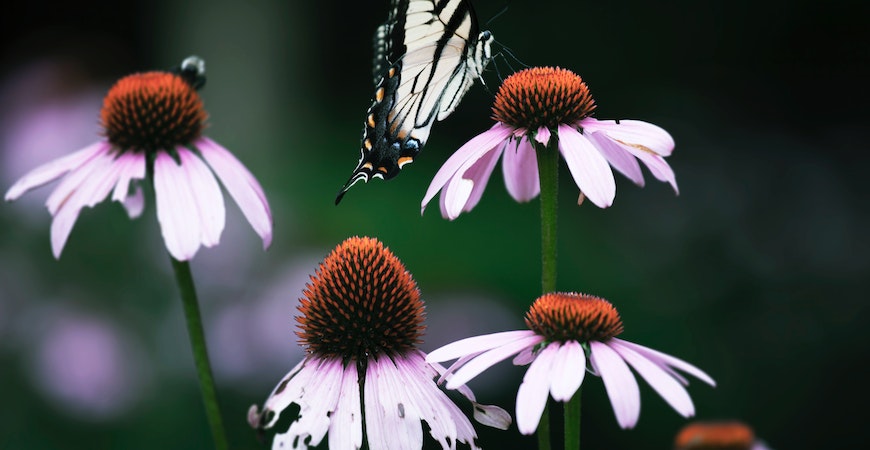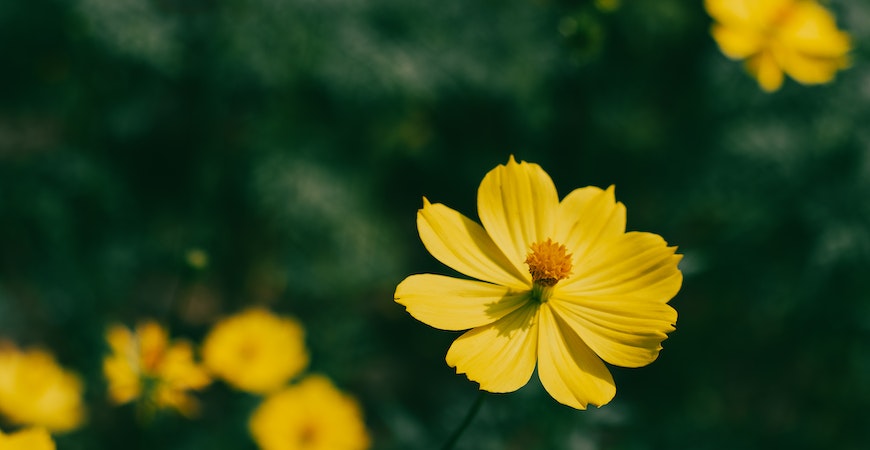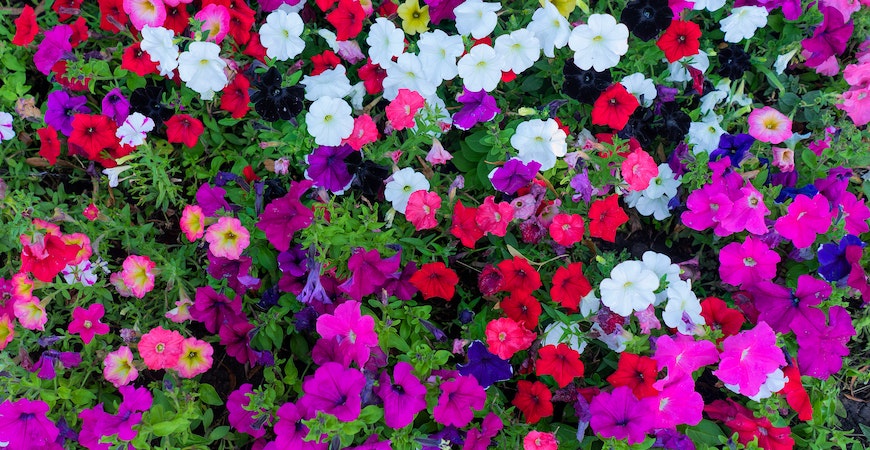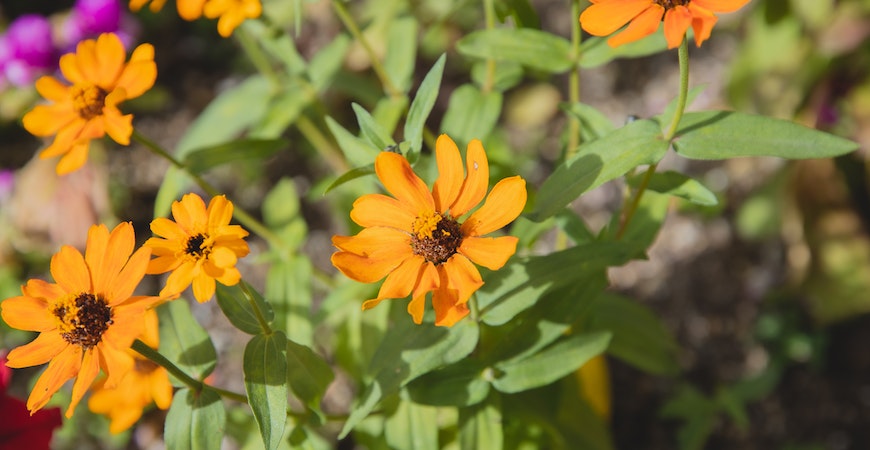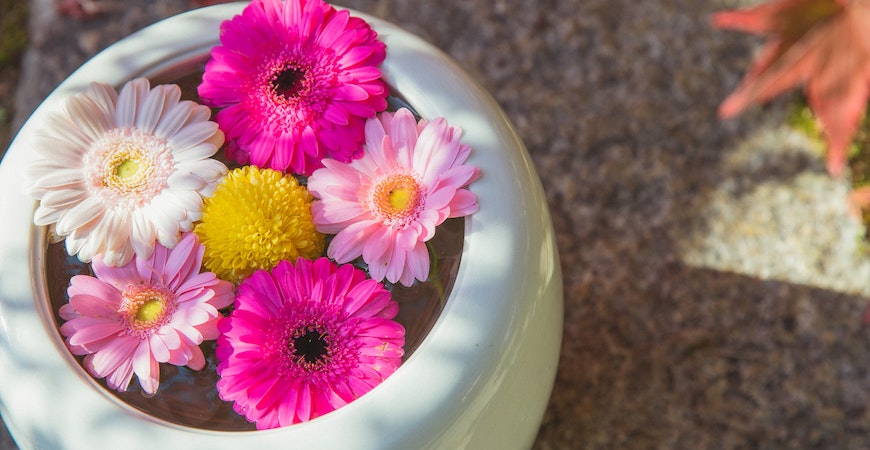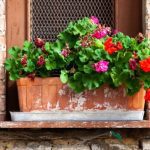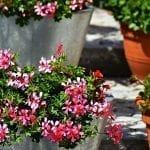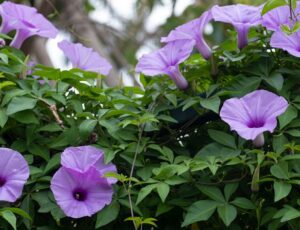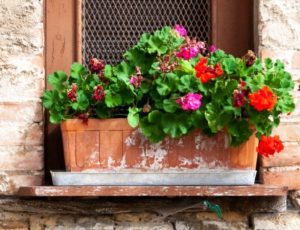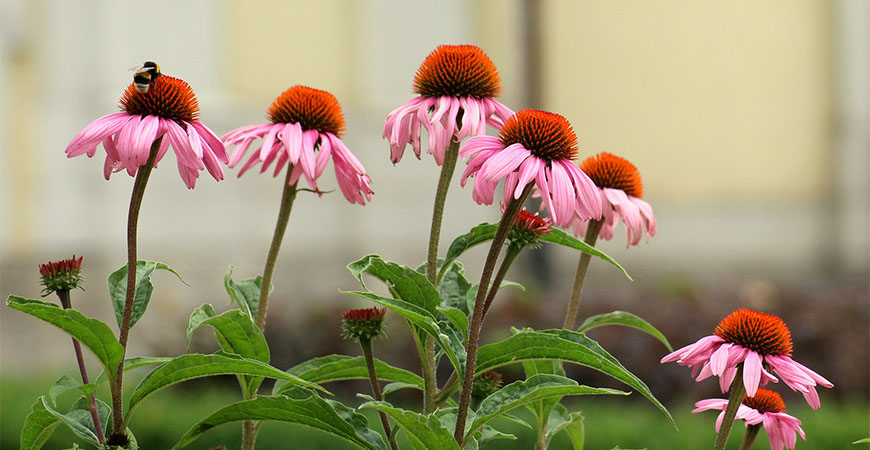
Our Favorite Plants for Low-Maintenance Flower Beds
Everyone wants beautiful, thriving flower beds for their yard. But for those without green thumbs, the only thing sprouting in their garden is random bouts of anxiety and sciatica.
So, instead of fussing about with plants that need as much care as a newborn, why not deploy low-maintenance flower beds?
By using plants that thrive in various environments and without much care, you can save yourself time, energy, and money while still receiving all the benefits of a picturesque garden.
Our Favorite Low-Maintenance Flowers
The foundation of all easy, low-maintenance flower beds is the flowers themselves. Finicky, fussy flowers will quickly erode your effort to keep things as simple as possible.
As a general rule of green thumb, local and native wildflowers are the best choice. Since they are used to the conditions of your local environment, a scattering of seeds may end up being all you need for a vibrant flower garden.
If you’re unsure what wildflowers are native to your area, visit your local garden center or nursery. They should have all the info you need to find plants native to your region.
If you’re looking to spice things up and go beyond the expected, though, consider some of our favorite low-maintenance flower bed ideas.
Coneflowers
Coneflowers are perennial pollinators whose main care needs are space and well-draining soil. They are an ideal addition to any low-effort gardening plans as they can tolerate most diseases and pests.
You should consider coneflowers if you live in USDA plant hardiness zones 3 through 9. Their varieties can be found natively all over the eastern and central regions of the United States.
And if you’re wondering exactly why they’ve been given their distinct name, it’s because of the cone-like center that rises from the middle of the flower. These cones attract all sorts of well-needed pollinators, such as bees, butterflies, and finches.
Depending on the variety you choose, you’ll end up with flowers that can grow up to four feet in height. And they add a lively pop of pinkish-purple to your garden — though they can also range in color from white to yellow to salmon pink and red.
To fully thrive, pick a spot where they’ll receive at least five hours of full sun. In hotter climates, afternoon shade can help prevent sunburnt petals.
Well-draining soil will also aid coneflower growth. If the soil becomes too moist and roots too saturated, wilting becomes likely.
Coneflowers are great to plant alongside asters, butterfly bushes, and oriental poppies.
Cosmos
Cosmos flowers are another low-effort plant that will thrive in many locations. They aren’t bothered by pests or low-nutrient soil, and they self-sow.
These daisy-like flowers come in a spectrum of vibrant hues, from white and pink to orange and red to chocolatey browns. If you want to add a dash of color to your garden or yard, cosmos are a perfect choice.
Most cosmos grow best in planting zones 2 through 11. However, you should only consider planting chocolate cosmos in zones 7 to 9.
Otherwise, all cosmos need is bountiful sunlight and protection from strong winds. While they prefer neutral-to-alkaline, well-draining soil, they hardly need ideal soil conditions to thrive.
Plant cosmos seeds in your garden just before the last spring frost. Deadheading will help the flowers grow, but make sure to leave some spent flowers to allow for self-seeding next spring.
Common cosmos companions include marigolds, poppies, and tomato plants.
Petunias
For a bolt of warm colors that thrives almost anywhere the sun shines, consider the humble petunia for your low-maintenance flower beds. These versatile flowers are as comfortable in a porch planter as they are in a garden bed.
And while they do require some care, it’s easy to diagnose and rectify any potential issues your petunias face:
- If the leaves are yellowing, reduce how often you’re watering or move the flowers to an area with well-draining soil.
- If the leaves are wilting, move them to where they receive at least six hours of sun or into a larger planter that’s at least a cubic foot big.
Otherwise, the only care your petunias require is semi-regular deadheading. Toss the cut flowers into a compost pile and use that compost to improve soil quality to complete the circle of life.
When planting petunia seeds, it’s best to wait until after the last frost of spring and place them where they’ll receive abundant sunlight. You can also purchase young petunias at your local garden center and transfer them outside along the same timeline.
For the perfect petunia pairing, plant them alongside asters, daisies, and snapdragons.
Zinnias
Zinnias are elegant, striking, and easy to tend to. They’re drought-tolerant, and perhaps the most difficult aspect of their care is making sure to water the soil and not their leaves or petals.
Like other flowers on this list, zinnias attract pollinators. They welcome butterflies and birds, adding another layer of beauty to your garden.
Additionally, zinnias can attract other beneficial insects, such as ladybugs. These bugs are the natural predators of the more nasty pests, like aphids and spider mites.
Zinnias are also bountiful and grow quickly. You can keep cutting off blooms to use as gifts or dried bouquets, and the flower will continue to thrive.
Try planting their seeds after the last spring frost. For hardiness zones 4 through 8, that typically means sometime in May — though colder or warmer climates may want to adjust this timeline accordingly.
To plant, direct-sow your seeds about a quarter of an inch deep into your flower garden. Within a week, you should begin to see seedlings sprout.
Then, when they’ve reached a height of around three inches, begin to thin the flowers out until they are about 18 inches apart. This extra space will give them plenty of air circulation and encourage healthy, sustainable growth.
If you have a vegetable garden, consider pairing your potential harvest with zinnias. Asparagus, leafy greens, peppers, and tomato plants all benefit from having zinnias at their side.
Easy Low-Maintenance Flower Bed Ideas for Your Front of House
Most of the time, the difference between front yard gardens and those behind your home is mostly about sunlight exposure. That is, you should reserve the yard that faces south for the flowers that require the most sunlight and vice versa.
However, an especially vibrant front yard garden can help boost curb appeal.
For instance, choosing flowers of various heights will make each one easier to see (and admire) while also allowing them to receive the right amount of light throughout the day.
Looking at the list of our favorite low-effort flowers, a dwarf variety of zinnia may pair well with cosmos and coneflowers. The former typically tops out between 6 to 12 inches, and the latter two can reach a height of a couple of feet.
Succulents, another plant species that tend not to need much tending to, may work well with petunias, which can end up anywhere from 6 to 18 inches tall.
Porch planters and flower boxes can also give your front yard a dynamic design. You’ll be able to move planters around to match any style and ensure their flower inhabitants always have the sunlight or protection from the elements that they need.
When it comes to low-maintenance flower bed ideas, whether it’s the flowers themselves or your preferred design style, the options are nearly limitless!
Low-Maintenance Flower Beds Can Turn Anyone’s Thumb Green
You don’t need to be a gardening savant to have gorgeous, flourishing flower beds. Instead, plant a mix of our favorite low-effort flowers and local, native wildflowers to create a garden that fits your schedule and budget.

